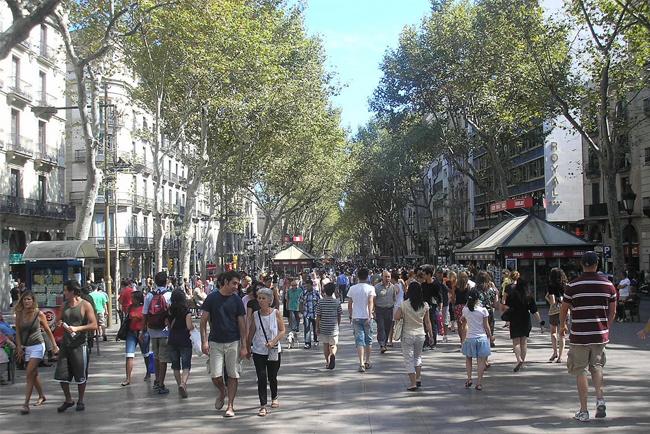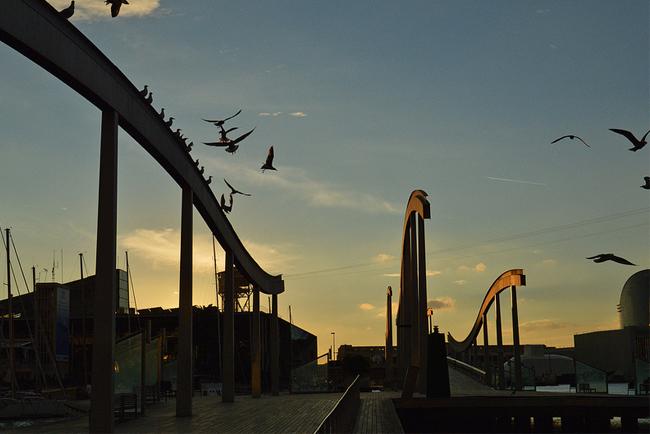Online bookings
24 hours a day
0044 (0) 20 3239 1595
English Phone
Mon-Fri: 8-16:00 GMT
Customer Service
The street is known by various different names.... La Rambla, or Las Ramblas, and its not entirely clear whether this covers the one avenue or other streets as well....in any event, this is definitely one of the most famous streets in Barcelona and is one the city's main attractions.
It is likely that many people don't know the origin of the fame of Barcelona's Las Ramblas, but after reading this article, even the vaguest of tourists won't help but appreciate a stroll along the length of this tree-lined avenue thanks to their increased awareness of what it has to offer.

The word Rambla, in the singular, refers to a a wide street, but....is there just one of these or several? There are dozens and dozens of avenues in Barcelona, especially the main ones in each neighborhood such as La Rambla in Raval or La Rambla in Poblenou. The La Rambla that we are talking about, is the city's largest and is actually located in the district known as the Ciutat Vella, the oldest part of the city which also divides it in two as the border between the neighborhoods of Raval and the Gothic Quarter. In actual fact, La Rambla is made up of 5 different tree-lined avenues, each with its own name and history. As you come out of the Plaza Catalunya, you will find the first which is called La Rambla de Canaletes, then there is the Rambla dels Estudis, followed by the Rambla de les Flores, which is also known as the Rambla de Sant Josep. And to finish off, the stretch that arrives at the statue of Christopher Columbus has the name of La Rambla de Santa Monica. Some people consider the most recently built, the Rambla del Mar, to be the sixth, precisely because it passes in front of the sea and is built with a modern undulating bridge which periodically lifts off the ground in order to let ships pass through.
The word Rambla is derived from an Arabic word, "Ramla" which means sandy: in fact, this wide road was originally a torrent that was enclosed by walls and convents and it was only in the XVIII century that construction began around the Boquería market and eventually, the street was urbanized, transforming it into the pedestrian area that we can see and admire today.

Nowadays, La Rambla is used by thousands of tourists as they move around the city towards the sea and vice versa. Along this route, there are a variety of different attractions such as the Erotic Museum which is recognizable by the image of Marilyn Monroe waving at passers-by from the balcony above the entrance; the Wax Museum and the Ham Museum which are on the list of attractions that can be visited with the iVenture card which can be provided by Barcellona.shop. Free attractions that you can't afford to miss are the stalls that you will find along the streets, the kiosks that sell souvenirs of all kinds (such as lovely original seeds or plants) and occasional performances by street artists. In the middle of the street, you can gain access to the very colorful and aromatic Boqueria Market where we would definitely recommend a visit so that you can sample some of the typical products of Barcelona.
You can reach the heart of La Rambla very easily on the metro by getting off at the Liceu station on the Green or Red Lines, or at the stop for Catalunya on the Lines L1,L3,L6,L7 and can then walk down the entire avenue towards the sea.
If you are strolling along Barcelona's La Ramba, in addition to admiring your surroundings, there is something that you absolutely have to do: drink from the Fountain de Canaletas. What's this? Its a small fountain that supplies drinking water to passers-by and is situated on the right hand side of the avenue, near the Plaza Catalunya (if you are heading towards the sea). Why is it so famous? Because of a legend which is engraved on a bronze plaque and has the inscription: “if you drink water from the fountain of Canaletes you will always be in love with Barcelona. And however far you travel, you will always come back." This is a direct translation from the Catalan. Needless to say, the city's beauty would make anyone want to come back, and one day, who knows, you might even decide to live here. However, the ritual that we are talking about is actually related to the world of football. This link between the fountain and football came about in the 1930's: fans used to come here to read the results of the games which were written up on a blackboard below the editorial office of the newspaper called La Rambla which is situated just in front of the fountain of Canaletes. Even today, this site is still a popular meeting point for dedicated fans of "Barca," the world famous football club.
And then there is a final curious fact about Las Ramblas. At the end of the avenue, just before the Rambla del Mar, is the statue of Christopher Columbus. Even a lot of Spaniards are not aware that the nationality of this famous historical figure is a subject for debate between two countries: both Italy and Spain believe that he was a compatriot of theirs!
My comments